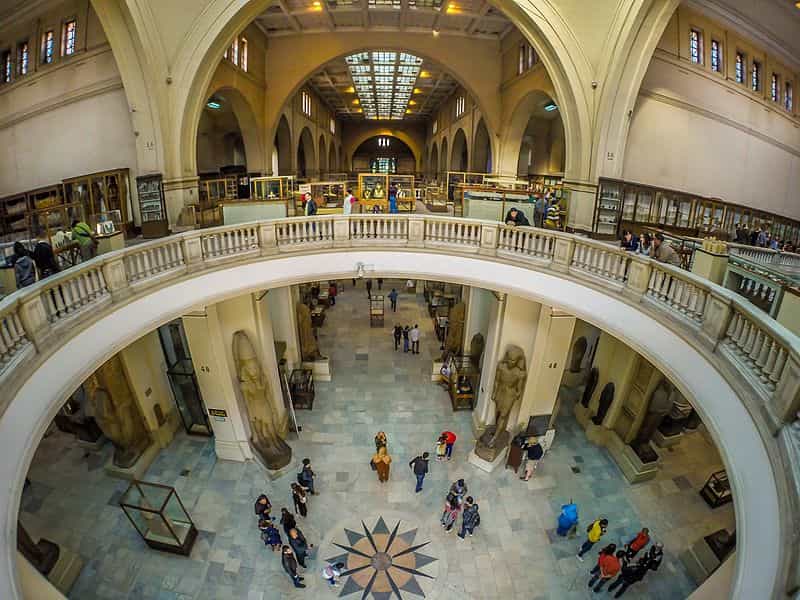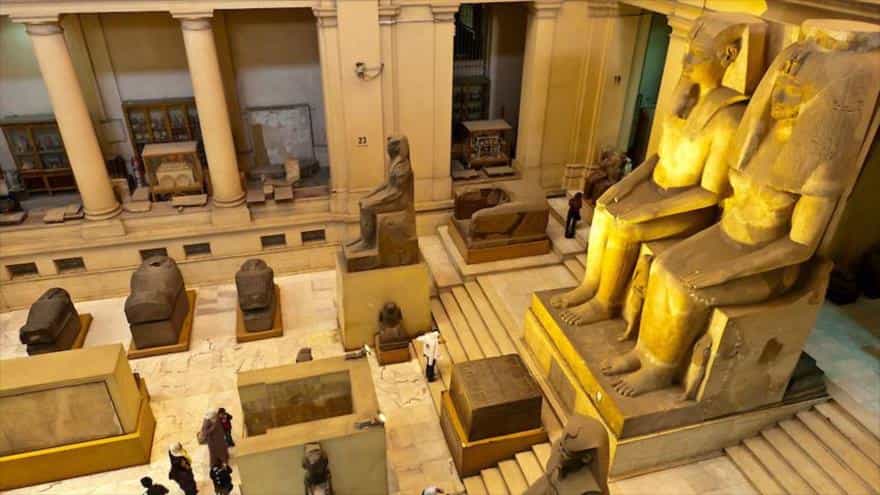The Egyptian Museum of Cairo or Museum of Egyptian Antiquities, actually called the Egyptian Museum, is located in Cairo ( Egypt ), and houses the largest collection of objects from the time of Ancient Egypt.
It has more than 136,000 classified objects from different periods of Egyptian history: Early Dynastic Period, Old Kingdom, Middle Kingdom, New Kingdom, Third Intermediate Period, Late, Hellenistic and Roman, standing out from other museums not only for the quantity, but also for the importance of many of them.
More than two and a half million people visit the museum annually.
It is located in the center of Cairo, on Tahrir Square. It was designed in 1900 by French architect Marcel Dourgnon in Neoclassical style, inaugurated in 1902.

Background
In 1835 the Egyptian Antiquities Service was created to protect the country’s treasures and monuments from local and foreign greed and plunder.
In 1858 Auguste Mariette (then director of the Antiquities Service) opened a new museum in the Bulaq neighborhood, on the banks of the Nile, but it was rendered useless during a major flood.
The government decided to build a large museum, and until then the collection was kept in the palace of Ismail Pasha, in Giza.
Evolution of the museum
Since 1922 the museum experienced a spectacular growth as its funds increased with the great treasure of Tutankhamun, of more than 3500 objects, discovered by Howard Carter (financed by Lord Carnarvon) in the tomb of the pharaoh (KV62), in the Valley of the Kings, located in the vicinity of ancient Thebes.
Interior organization
On the ground floor there is an extensive collection of papyri from the last two millennia. They are written in various languages, Greek, Latin, Arabic, Ancient Egyptian, and in hieroglyphic writing.
The coins are made of gold, silver and bronze, and there are them not only from Egypt, but also Greek, Roman, and Islamic, which has helped historians in the investigation of ancient Egyptian trade.
Also on the ground floor are objects from the Old, Middle and New Kingdoms, and include statues, paintings, and sarcophagi.
Among them are objects found in the tombs of various pharaohs, as well as many others found in the Valley of the Kings.
On the top floor is the treasure of Tutankhamun and the exhibition continues in chronological order with objects from the past dynasties, including the dynasties Twenty-first and Twenty-second of Tanis, including the golden mask of the Pharaoh Psusennes I.
The collection ends with the display of various pieces from the Roman period, such as a mosaic with the head of Medusa.
There are still a large number of objects in the warehouse, located in the museum’s cellars that have not been documented, including those from around 600 tombs, whose inventory will last for years.







